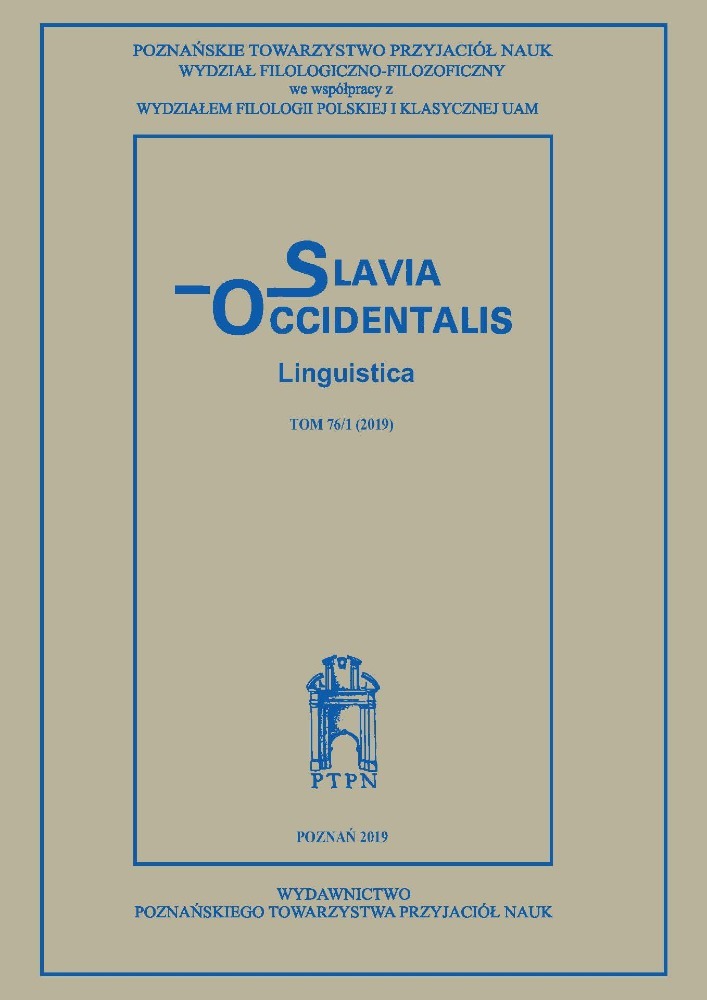Abstrakt
The aim of the article is to analyse the linguistic landscape of the Polish-Czech borderland with particular emphasis placed on the number and hierarchy of languages existing in the public space. A static study will be carried out i.e. a study of the language(s) of public road signs, names of streets and squares, public-access buildings, signs on businesses and shops, hoardings etc. The research material comes from two small towns: Duszniki Zdrój in Poland and Hronov in the Czech Republic, both aspiring to become local tourist centres. The global vs. local opposition is of importance to the assumptions made in the study because the language will be regarded as a local practice (Pennycock, 2010). In conclusion, the study will examine the thesis that the local linguistic landscape is a testimony to a transition from a monolingual paradigm towards a “post-monolingual condition” (Yildiz, 2012). It will also be very interesting to find out which configuration of the languages can be considered sustainable in terms of the area’s multilingual nature.
Bibliografia
Appadurai A., 2005, Nowoczesność bez granic: kulturowe wymiary globalizacji, tłum. Z. Pucek, Universitas, Kraków.
Fill A., 1996, Ecolingustics – State of Art 1996, w: Language and Ecology: Eco-Linguistics. Problems, Theories and Methods, red. J.Chr. Bang, J. Døør, Odense, s. 11–16.
Fill A., 2007, Introduction, w: Sustaining Language: Essays in Applied Ecolinguistics, red. A. Fill, H. Penz, Münster, s. 1–4.
Hatoss A., 2004, Sustainable multilingualism as an essential characteristic of multicultural societies: the case of Australia, w: Language, Attitudes and Education in Multilingual Cities, Bruksela.
Krysztofowicz D., Krupienicz Z., 2017, Krajobraz językowy ul. Ratajczaka oraz ul. Garbary w Poznaniu, w: Kreatywność językowa w przestrzeni publicznej, red. K. Burska, R. Zarębski, Łódź, s. 63–75.
Moriarty M., 2014, Languages in motion: Multilingualism and mobility in the linguistic landscape, “International Journal of Bilingualism”, vol. 18 (5), s. 457–463.
Mühlhäusler P., 2003, Language of Environment, Environment of Language. A course in Ecolinguistics, London.
Pennycook A., 2010, Language as a Local Practice, London–New York.
Pennycook A., Otsuji E., 2015, Metrolingualism. Language in the City, London.
Skutnabb Kangas T., Phillipson R., 2008, A Human Rights Perspective on Language Ecology, w: Encyclopedia of Language and Education, red. N.H. Hornberger, Springer, Boston, s. 107–119.
Steciąg M., 2017, Lingua receptiva czy lingua franca? Pracownicy branży usługowo-turystycznej o komunikacji czesko-polskiej na pograniczu (badanie ankietowe), „Studia et Documenta Slavica”, vol. 4, s. 59–75.
Trudell B., 2009, Local-language literacy and sustainable development in Africa, “International Journal of Educational Development”, vol. 29, s. 73–79.
Yildiz Y., 2012, Beyond the Mother Tongue. The Postmonolingual Condition, New York.

